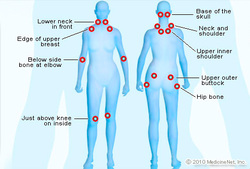Best Fruit and Veg on a Budget
by Christina Larmer
Here's the lowdown on 10 great winter fruit and veg that give the most nutrition for the lowest price.
As the price of fresh food continues to soar – statistics show the price of vegetables has risen by 18 per cent and fruit by 25 per cent from March 2010 to March 2011 – many of us find ourselves asking which produce will give us more bang for our buck.
In particular, price hikes in broccoli, bananas, tomatoes and lettuce have left us searching for new staples. Is bok choy as good for us as broccoli? Is that overpriced lettuce now a waste of time?
"Some fruit and vegetables are more nutritionally dense than others, but they all have value and we should try to get a wide variety," says Aloysa Hourigan, senior nutritionist with Nutrition Australia.
As the amount of people avoiding fresh food altogether is reportedly now at 30 per cent, Hourigan says we need perspective on the cost and value of healthy food.
"Traditionally, prices have been low in Australia compared with Europe," she says. "Besides, many people would pay $2 for an ice block but balk at paying less than that for a banana."
You can get all the nutrition you need from fresh food without breaking the budget. "Go for things with good colour," Hourigan says. The more colour you have, the wider the variety of vitamins, minerals and antioxidants.
by Christina Larmer
Here's the lowdown on 10 great winter fruit and veg that give the most nutrition for the lowest price.
As the price of fresh food continues to soar – statistics show the price of vegetables has risen by 18 per cent and fruit by 25 per cent from March 2010 to March 2011 – many of us find ourselves asking which produce will give us more bang for our buck.
In particular, price hikes in broccoli, bananas, tomatoes and lettuce have left us searching for new staples. Is bok choy as good for us as broccoli? Is that overpriced lettuce now a waste of time?
"Some fruit and vegetables are more nutritionally dense than others, but they all have value and we should try to get a wide variety," says Aloysa Hourigan, senior nutritionist with Nutrition Australia.
As the amount of people avoiding fresh food altogether is reportedly now at 30 per cent, Hourigan says we need perspective on the cost and value of healthy food.
"Traditionally, prices have been low in Australia compared with Europe," she says. "Besides, many people would pay $2 for an ice block but balk at paying less than that for a banana."
You can get all the nutrition you need from fresh food without breaking the budget. "Go for things with good colour," Hourigan says. The more colour you have, the wider the variety of vitamins, minerals and antioxidants.

Oranges
Average price: $2 per kilo.
Eat this if you can't afford: Strawberries, broccoli, capsicum, grapefruit or mango.
Why it's a good option: A source of folate and vitamin C, oranges help ward off infections and maintain healthy bones, teeth, gums and blood vessels.
One orange has all the vitamin C you'll need in a day.
Average price: $2 per kilo.
Eat this if you can't afford: Strawberries, broccoli, capsicum, grapefruit or mango.
Why it's a good option: A source of folate and vitamin C, oranges help ward off infections and maintain healthy bones, teeth, gums and blood vessels.
One orange has all the vitamin C you'll need in a day.

Silverbeet
Average price: $3.78 per bunch.
Eat this if you can't afford: Asparagus, broccoli or blueberries.
Why it's a good option: Silverbeet is a rich source of folate and vitamin E and helps lower your risk of heart disease and colon and breast cancer.
Silverbeet has twice the potassium found in asparagus.
Average price: $3.78 per bunch.
Eat this if you can't afford: Asparagus, broccoli or blueberries.
Why it's a good option: Silverbeet is a rich source of folate and vitamin E and helps lower your risk of heart disease and colon and breast cancer.
Silverbeet has twice the potassium found in asparagus.

Onions
Average price: $2.75 per kilo.
Eat this if you can't afford: Brussels sprouts, alfalfa sprouts, broccoli, red capsicum, corn or eggplant.
Why it's a good option: "They have plenty of disease-fighting antioxidants and add flavour to meals," Hourigan says.
An onion has twice as much calcium as one green capsicum.
Average price: $2.75 per kilo.
Eat this if you can't afford: Brussels sprouts, alfalfa sprouts, broccoli, red capsicum, corn or eggplant.
Why it's a good option: "They have plenty of disease-fighting antioxidants and add flavour to meals," Hourigan says.
An onion has twice as much calcium as one green capsicum.

Pumpkin
Average price: $1.50 per kilo (Kent variety).
Eat this if you can't afford: Lettuce, turnip or sweet potato.
Why it's a good option: They're a rich source of betacarotene, vitamin C, dietary fibre and potassium, which regulates blood pressure and maintains body functioning.
Pumpkin has nine times the amount of vitamin E than zucchini.
Average price: $1.50 per kilo (Kent variety).
Eat this if you can't afford: Lettuce, turnip or sweet potato.
Why it's a good option: They're a rich source of betacarotene, vitamin C, dietary fibre and potassium, which regulates blood pressure and maintains body functioning.
Pumpkin has nine times the amount of vitamin E than zucchini.

Bok choy
Average price: $1.80 per bunch.
Eat this if you can't afford: Zucchini, eggplant or mushrooms.
Why it's a good option: "Asian greens such as bok choy are often a cheap, nutritious option and provide plenty of folate, vitamin E and fibre," Hourigan says.
Bok choy has three times more iron than broccoli per serve.
Average price: $1.80 per bunch.
Eat this if you can't afford: Zucchini, eggplant or mushrooms.
Why it's a good option: "Asian greens such as bok choy are often a cheap, nutritious option and provide plenty of folate, vitamin E and fibre," Hourigan says.
Bok choy has three times more iron than broccoli per serve.

Carrots
Average price: $1.98 per kilo.
Eat this if you can't afford: Red capsicum or tomatoes.
Why it's a good option: "They provide fibre and beta-carotene, which converts to vitamin A," Hourigan says. This boosts immunity and eye health and protects against cancer.
Just half a carrot will give you all the vitamin A you'll need in a day.
Average price: $1.98 per kilo.
Eat this if you can't afford: Red capsicum or tomatoes.
Why it's a good option: "They provide fibre and beta-carotene, which converts to vitamin A," Hourigan says. This boosts immunity and eye health and protects against cancer.
Just half a carrot will give you all the vitamin A you'll need in a day.

Cabbage
Average price: $2.49 per half cabbage.
Eat this if you can't afford: Capsicum or brussels sprouts.
Why it's a good option: It's a good, affordable source of vitamin C, folate and protective indoles (phytochemicals which protect against cancer).
Half a cup of cabbage has 90 per cent of your daily vitamin K intake.
Average price: $2.49 per half cabbage.
Eat this if you can't afford: Capsicum or brussels sprouts.
Why it's a good option: It's a good, affordable source of vitamin C, folate and protective indoles (phytochemicals which protect against cancer).
Half a cup of cabbage has 90 per cent of your daily vitamin K intake.

Cauliflower
Average price: $3.78 each.
Eat this if you can't afford: Broccoli, kale, brussels sprouts or turnips.
Why it's a good option: "It's a member of the Brassica family and provides vitamin C, fibre and a wide range of minerals, vitamins, antioxidants and indoles," Hourigan says.
One cup of cauliflower gives 13 per cent of the daily folate requirement.
Average price: $3.78 each.
Eat this if you can't afford: Broccoli, kale, brussels sprouts or turnips.
Why it's a good option: "It's a member of the Brassica family and provides vitamin C, fibre and a wide range of minerals, vitamins, antioxidants and indoles," Hourigan says.
One cup of cauliflower gives 13 per cent of the daily folate requirement.

Kiwifruit
Average price: $3.42 per kilo.
Eat this if you can't afford: Strawberries, lemons, rockmelons or grapefruit.
Why it's a good option: Rich in folate and vitamin E, it "has excellent vitamin C and fibre, and is currently a cheap snack for school or work lunches," Hourigan says.
One kiwifruit has four times the vitamin C of a cup of blueberries.
Average price: $3.42 per kilo.
Eat this if you can't afford: Strawberries, lemons, rockmelons or grapefruit.
Why it's a good option: Rich in folate and vitamin E, it "has excellent vitamin C and fibre, and is currently a cheap snack for school or work lunches," Hourigan says.
One kiwifruit has four times the vitamin C of a cup of blueberries.

Apples
Average price: $4.75 per kilo (pink lady variety).
Eat this if you can't afford: Bananas, cranberries, blueberries or strawberries.
Why it's a good option: Apples are another great source of fibre, vitamin C and cancer-fighting antioxidants.
An apple has 25 per cent more fibre than a banana.
Average price: $4.75 per kilo (pink lady variety).
Eat this if you can't afford: Bananas, cranberries, blueberries or strawberries.
Why it's a good option: Apples are another great source of fibre, vitamin C and cancer-fighting antioxidants.
An apple has 25 per cent more fibre than a banana.



